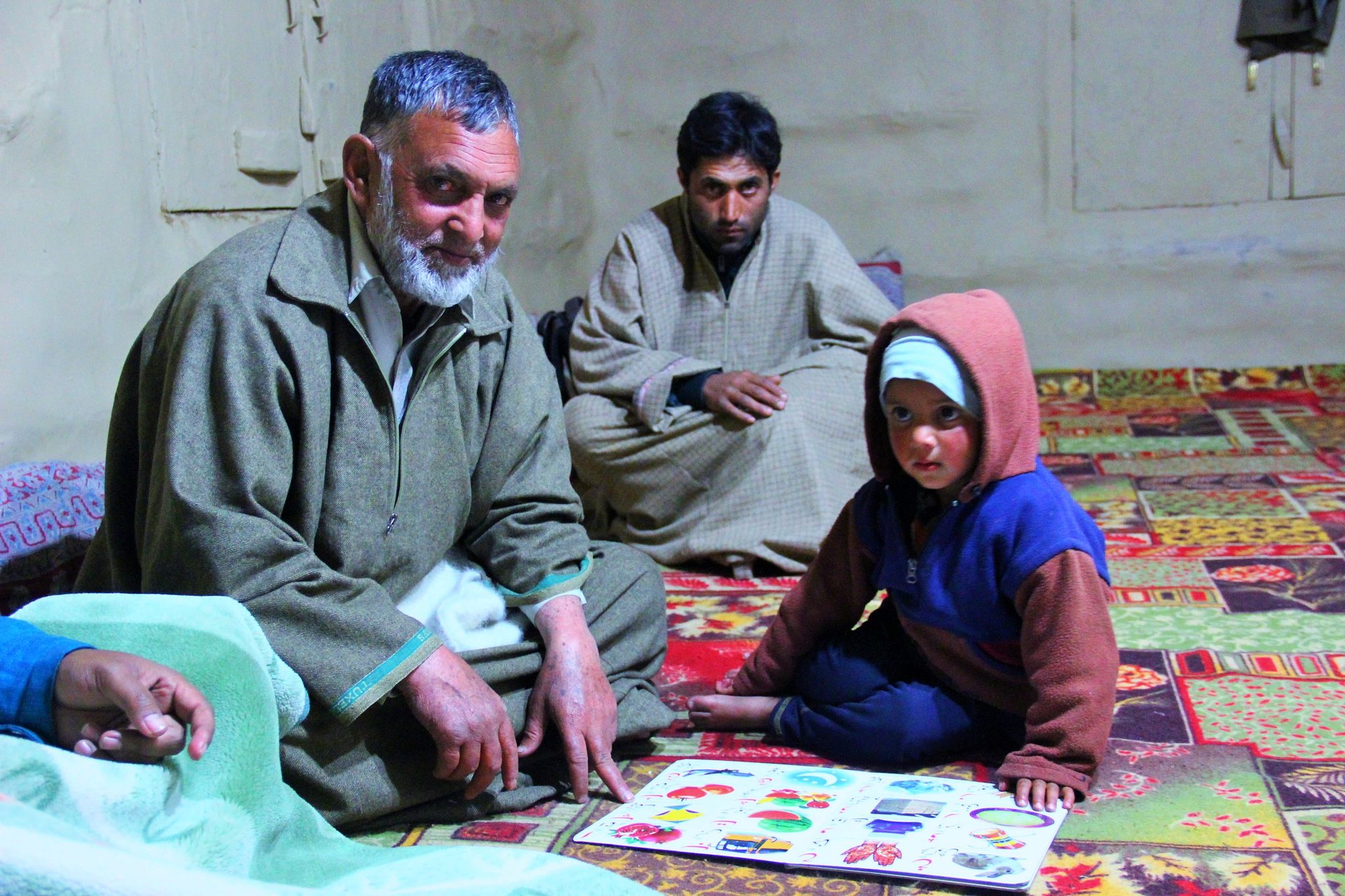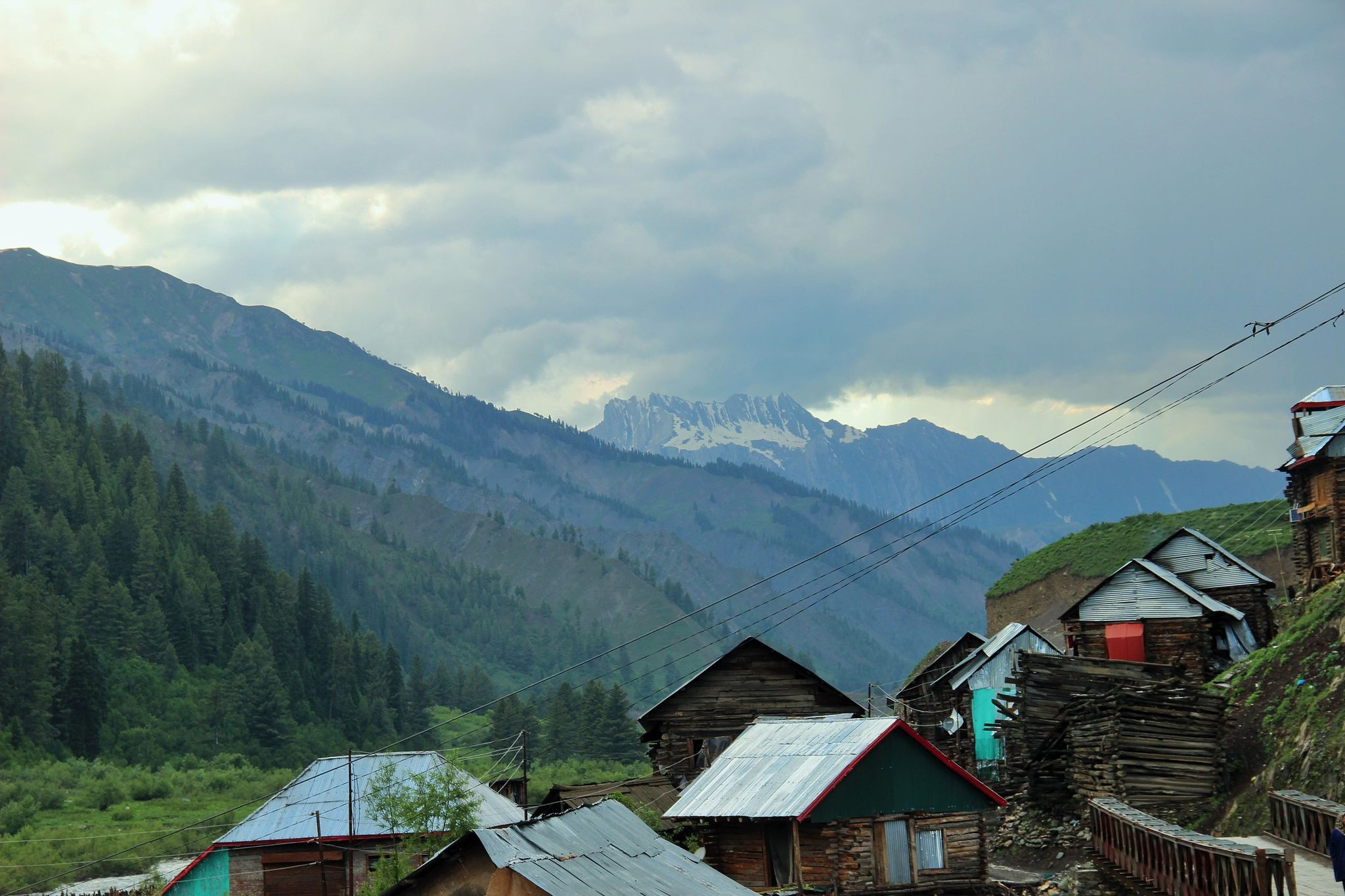What was once Kashmir’s gateway to the Silk Route across Central Asia seems to have lost touch with the outside world, discovers Ankit Naithani after a visit to Gurez

one of the few times I felt a sense of time creep into what seemed like a timeless landscape of Gurez was when a Gurezi kid, to my incredulous amusement, recited the lyrics of the infamous Bollywood song Rashke Qamar as if it was poetry in front of his teacher, classmates and me, in a tiny school in Sardaab, a hamlet in this remote valley near Srinagar. It was moments like this that showed me that the outside world had its tentacles breaking through the isolation of Gurez.



one of the few times I felt a sense of time creep into what seemed like a timeless landscape of Gurez was when a Gurezi kid, to my incredulous amusement, recited the lyrics of the infamous Bollywood song Rashke Qamar as if it was poetry in front of his teacher, classmates and me, in a tiny school in Sardaab, a hamlet in this remote valley near Srinagar. It was moments like this that showed me that the outside world had its tentacles breaking through the isolation of Gurez.
Gurez Valley was key to the Silk Route from Europe to Kashgar in China and home of Shina-speaking Dard tribe but it was not open to the world until 2007. Before 2007, Gurez was only open during colonial times when travelers came to explore the valley. The Line of Control now slices through the idyllic valley, separating the Dards from their Indo-Aryan brethren in Gilgit, Chilas, and Astore lying in Pakistan. Villagers I spoke to talk of days where they crossed the border, married their daughters off in what is now current day Pakistan… This only lasted for a while until tensions escalated between the two countries. The reminder that this valley was right at the border was emphasized over and over again when I saw concertina wires fencing the valley, an ominous sight when I rode my bike through the landscape.
The valley, about 126 km from Srinagar in the northern part of Kashmir, reveals itself to travelers after almost a day’s journey from Kashmir’s capital.

It is usually seven hours of road journey, but my friend and I took several pit stops because the journey was breathtaking.
I have trekked extensively in Kashmir — in fact, I had just led a batch of trekkers for a trek in Aru valley a week ago.
Aru is near Pahalgham, an area that is frequented by tourists. And yet, I was not prepared for the beauty Gurez had to offer me.
A tiny Shangri La in the state that was paradise. One of the most memorable pit stops was the Wular lake, one of Asia’s largest freshwater lakes,
a still moss green water mass set against the backdrop of Pir Panjal peaks, on the way to Bandipore. From Bandipore, Gurez was around three hours away.
Gurez is connected to Kashmir via Razdan Pass, resting at an elevation of 11,672 ft. We rode up to catch the magnificent sight of Mt Harmukh, which is considered a holy mountain by Kashmiri Hindus.
It was a pleasure for me to see a different face of the mountain from Razdan Pass. I had seen this mountain before — a few years ago, standing guard over a lake called Gangabal, one of the many alpine lakes found on a trek that is popularly called Kashmir Great Lakes.
Mystical I felt an immediate shift in geography after Razdan Pass as we rode to Gurez. It was not a drastic shift as it would be from Kashmir to Ladakh.
Gantz's difference felt more nebulous. The valley was broader, perhaps. Or the forests were denser. The log cabins dotting the valley markedly made in a different style than Kashmir.
The sparkling Kishanganga River, that merges with the River Jhelum, later on, runs through the length of the valley closed in by the craggy mountains filled with firs.
The Habba Khatoon, the intimidating pyramid-shaped mountain, rises to the sky. Habba Khatoon was named after a 16th-century poetess known as the ‘Nightingale of Kashmir’.
Once her husband Yusuf Shah Chak, the ruler of Kashmir, was taken hostage by Mughal Emperor Akbar. Habba Khatoon roamed the valley singing mournful songs of separation.
Her songs are a part of the fabric of Kashmir’s literary history. It is said that Dardic king Yusuf Shah Chak met her at the foot of the mountain.
It is also said Habba Khatoon met her end there — I am not sure which version of the story is true, but their story certainly adds mystique to the mountain.
My friend and I stayed in the government-owned Tourist Reception Centre in Dawar, the largest town in Gurez on our first day. Gurez is divided into three areas, defined by its major settlements — Dawar, Tulail, and Baghtoor.
Dawar is the only place with a petrol bunk and shops that stock food like chips targetted at tourists. The best way to describe hamlets when you move further from Dawar is “pockets of civilization in the wilderness”.
Our phones didn’t work beyond Dawar and electricity graced its presence for a few hours through diesel generators. The road after Razdan Pass will only be a delight for off-road biking enthusiasts — no one else would enjoy the bumpy journey as the roads become dirt tracks.
Our goal on our second day in Gurez was to go to the last Indian village at the border, Chakval in Tulail valley. We passed through Kanzalwan, where it is said that the fourth and the last council of Buddhism was convened.
Our day was spent riding through the valley, meeting warm and curious faces asking for our stories, telling us their stories, the stories of the valley and it’s floral and fauna riches, and insisting that we sit with them for chai.
When we told them we were in a hurry and could not come inside their houses for chai, they brought chai outside! Such was their gregarious warmth.
Landlocked valley The relationship the people of Gurez had with the Army was a lot more cordial than I had seen in the other parts of Kashmir.
. I had been to Kashmir in 2016 when the Burhan Wani incident imploded over the state and I had seen tensions run high with hostility and suspicions spilling over to the military.
It probably helped that Gurez, a landlocked valley that is cut off from Kashmir during its harsh winters, gets relief supplies and helicopter rescue sorties from the Army.
Razdan Pass gets snowed in from November till early April, making traveling to the valley impossible.
This physical isolation from the rest of the world has kept the valley preserved, and frozen in time. The few times I felt the presence of an outside world was,
of course, when the boy who recited Rashke Qamar, and I saw the dam being built on Kishanganga, and the concertina wires that marked the border.
When we reached the last checkpoint of the border where we were watched intently by Army men, we were told: “You are standing at a point from where the men from Pakistan can see you from their checkpoints.” It gave us goosebumps.
We decided to return to a hamlet called Sardaab for the night, where a school teacher had generously invited us for a Gurezi dinner. We had little idea about how we would find the school teacher again as our phones were not working.
We had little idea about how we would find the school teacher again as our phones were not working. However, going by the warmth the people had shown us, there was no need to worry.
When we reached the school, preparations for dinner was already underway with Gurezi food being cooked on an open flame. We stayed the night in Sardaab.
The next day began with a session with the kids. The kids spoke Shina and weren’t exposed to Hindi. So we made do with gestures and body language. We traveled to Bandipore on our third day, where my bike, after all the off-roading and crossing streams that it was subjected to, decided to give up.
It was at the same time the news that Bandipore was put on high alert came in. When an area in Kashmir is on high alert, the chances are you would get stuck there for days. My friend and I decided to get out that very night.

Thankfully, Bandipore had a very kind mechanic, who opened his shop late in the night for us, repaired the bike, and even refused payment. It took us much persuasion to make him accept the money.
We left for Srinagar that night, spotting jackals all along the way. The spell of Gurez breathed its last when we reached Srinagar in the wee hours of the night. Yet, the forgotten valley leaves a mark on those who venture into its folds.
(As told to Aswati Anand)





